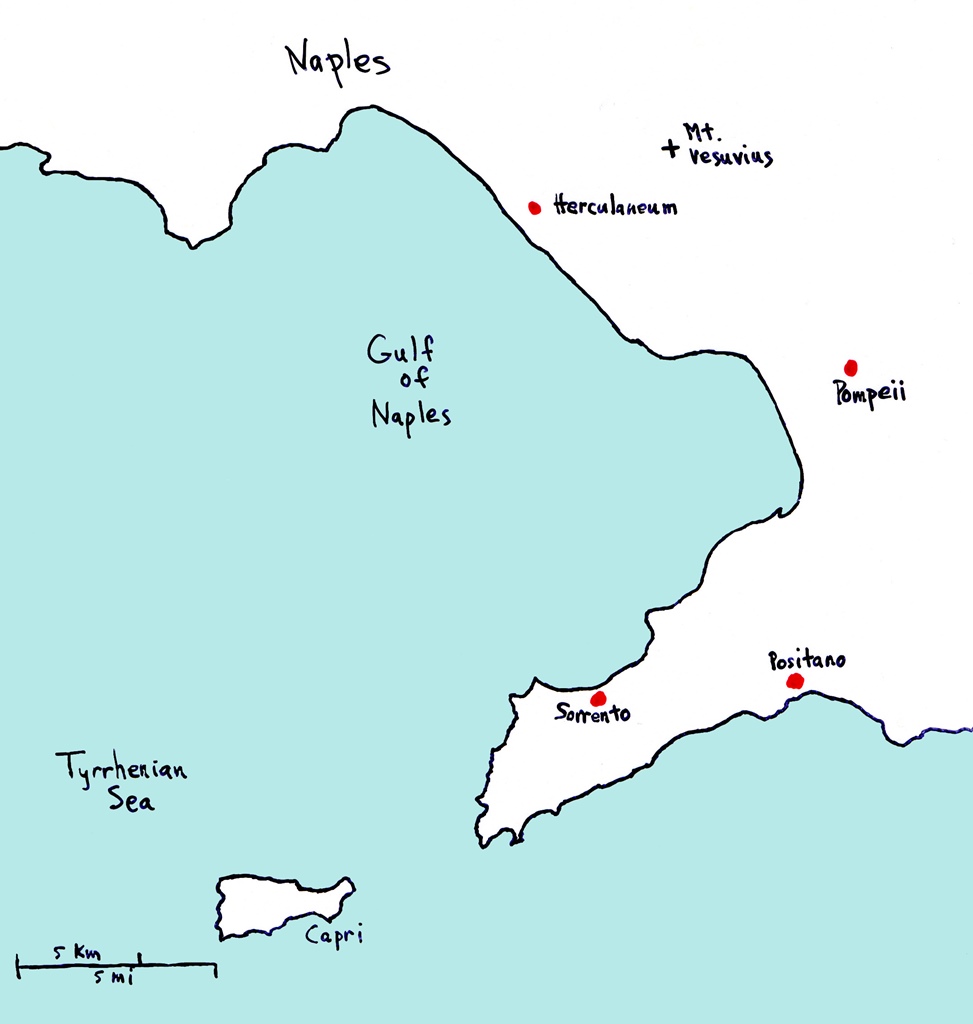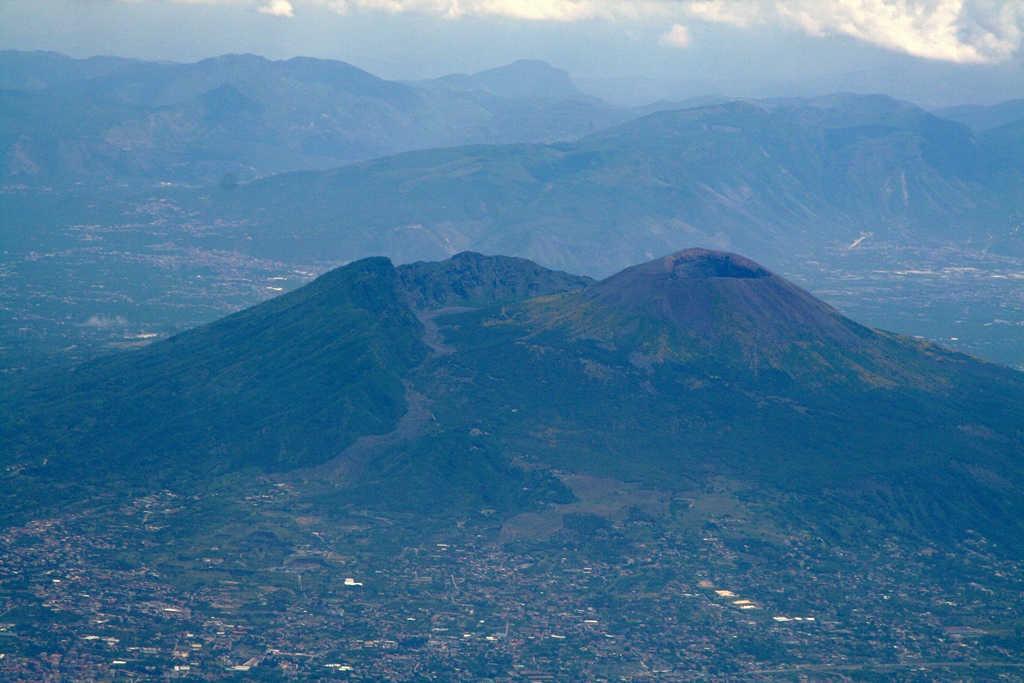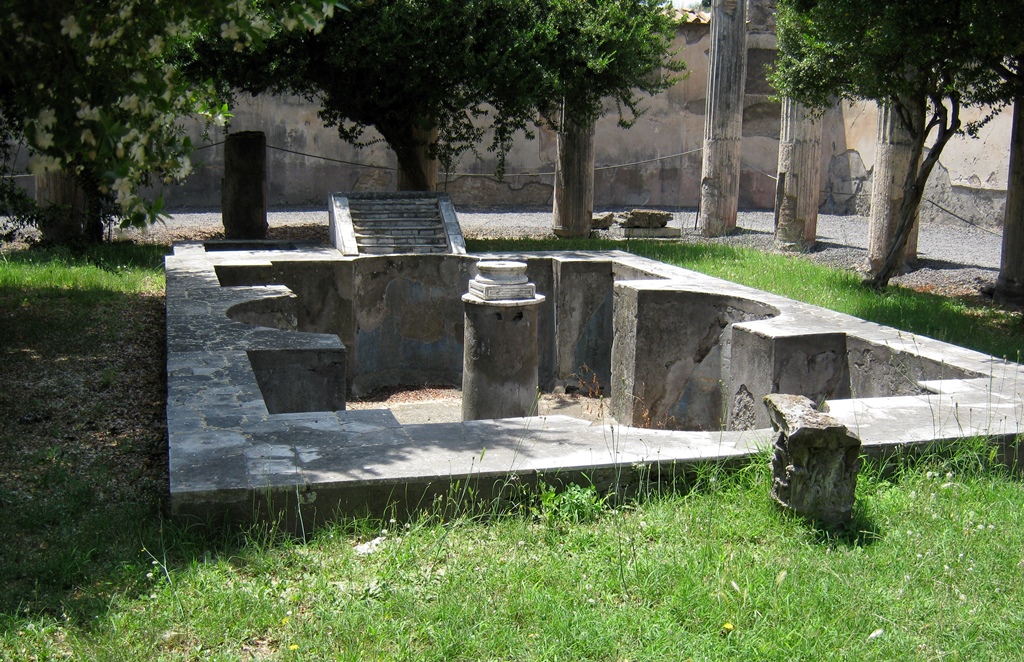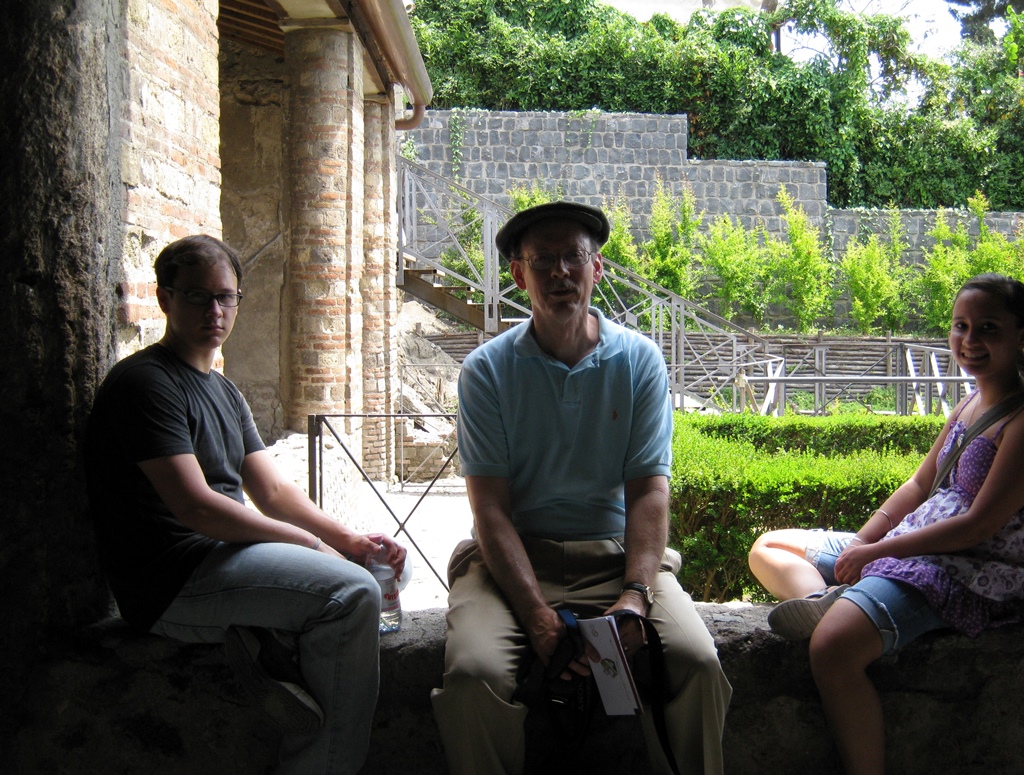Gulf of Naples Area
The city of Pompeii was a bad place to be on August 24 in the year 79 AD. Things started out
pleasantly enough, with the citizens of this Roman city of 20,000 going about their business
as usual. Establishments such as bakeries and restaurants were serving their customers, and
carts wheeled up and down the paved streets, making their deliveries. Other businesses, such
as public baths and brothels, were also supplying their popular services. Around the city,
repairs were still ongoing from a devastating earthquake which had struck the area seventeen
years earlier. But there was light at the end of the tunnel, and many of the industrious
residents had even found the time to decorate their homes with colorful paintings and
mosaics. But then the mountain blew up.
Mt. Vesuvius
Mt. Vesuvius, located a short distance to the northwest of Pompeii, is now known to be a volcano
of frightening potential. It is considered to be the only active volcano on the European continent
(two other volcanoes, Etna and Stromboli, are on islands). All three volcanoes were formed hundreds
of thousands of years ago as a result of the subduction of the African tectonic plate beneath the
Eurasian tectonic plate. Vesuvius has been erupting off and on for several thousand years, but it
had been quiet for hundreds of years before 79 AD, apparently pausing to build up pressure. But
because of this prolonged period of inactivity, Vesuvius was not generally considered to be
anything other than a garden-variety 6500-foot mountain, though it did have some remarkably
fertile soil on its slopes.
So one can easily imagine profound surprise among the Pompeiians in the early afternoon of August
24 when a humongous blast was followed by the appearance of a thick column of ash, pumice and
other volcanic debris rising several miles into the sky. Unfortunately for Pompeii, the prevailing
winds in the area blow toward the southeast, and August 24 was not atypical in this respect. So
when gravity took over and the material blown skyward began to fall earthward, it did not land on
Naples, which was about the same distance from the mountain but to its northwest, but instead
started falling onto communities to the southeast. Like mainly Pompeii. To the unfortunate people
in this afflicted town, this meant the blotting out of the sun and the beginning of a continuous
snowstorm of choking dust. The dust was really pumice, and unlike snow, it was not going to melt
and go away, in warm weather or at any other time – it just accumulated, and quickly. Roofs began
to collapse under the weight, and Pompeii was being buried. This layer of pumice would eventually
exceed ten feet in thickness. Most Pompeiians took the hint, scraped together some belongings and
began to leave the city. But for reasons of their own, there were some who did not leave.
A pyroclastic flow can occur when the pressure of an eruption abates somewhat, and the
superheated, poisonous gases coming from the volcano can no longer be blown very far upward. This
leads to great clouds of volcanic material travelling rapidly down the sides of the volcano
instead of up into the sky. These flows can move very fast (up to hundreds of kilometers per hour,
depending on the slope) and can travel for several miles, and are instantly fatal to anything that
breathes. Early on August 25, after about 18 hours of dustfall, pyroclastic flows started making
their way toward Pompeii. The early flows struck the north wall of the city and were pretty well
stopped. But as they spent their energy, they dropped the debris they were carrying at the base of
the wall. This had the effect of contributing material to a "ramp" which was eventually high
enough to lift a flow over the wall and into the city. The first such flow was enough to ensure
that anyone still in the city would not be leaving. But there were more. And other volcanic
deposits continued for a considerable period.
After all the commotion was over, the now-lifeless city of Pompeii found itself buried under 30
feet of volcanic deposits and mudflows. Evidence has been found of nearly 2000 people who lost
their lives in the city. Many more undoubtedly perished outside the city, trying to escape, but
this number is unknown, and estimates vary widely. The shoreline which had bordered the city was
now a considerable distance away, thanks to all the deposits. Mt. Vesuvius had lost about 2000
feet of its elevation, probably because of the collapse of the peak into the now-empty magma
chamber beneath it. The Romans showed no interest in unearthing or rebuilding the city.
Centuries passed, and knowledge of and interest in the city faded to almost nothing. Until much
later, in the 18th Century, when accidental discoveries led to a painstaking excavation that
extended well into the 19th Century.
Early in the 21st Century, we were walking around the central train station in Naples, trying
to figure out how to get to Pompeii and into the excavated area for the fewest Euros. And we
found it when we located the booth that sells the Campania ArteCard. There are different flavors
of this wonderful discount card, and we settled on the Tutta la Regione version, which is
somewhat expensive at 27 Euros, but includes three days of all public transportation throughout
the area (as far south as Pompeii), admission to any two points of interest on a long list
(including both Pompeii and Herculaneum, normally more than ten Euros each), and 50% off on
admission to anything else on the list. We bought four, but unfortunately they didn't take
credit cards. We paid cash, which instantly wiped out most of the cash we'd just withdrawn from
the elusive ATM near our hotel, and we were immediately on the lookout for another ATM. Again,
we didn't find one at the train station, but we found our train by following signs to the
Circumvesuviana (this is the name of the train that follows the shoreline of the Bay of
Naples to the southeast, toward Pompeii). We boarded the train headed toward Sorrento (the end
of the line toward the south).
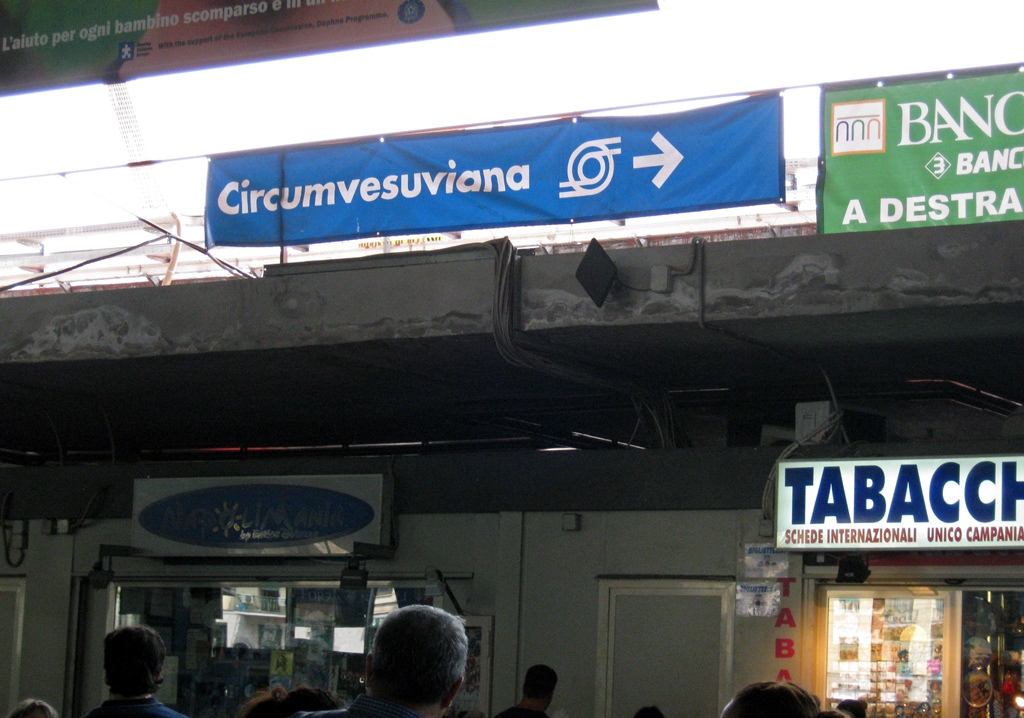
Circumvesuviana Sign
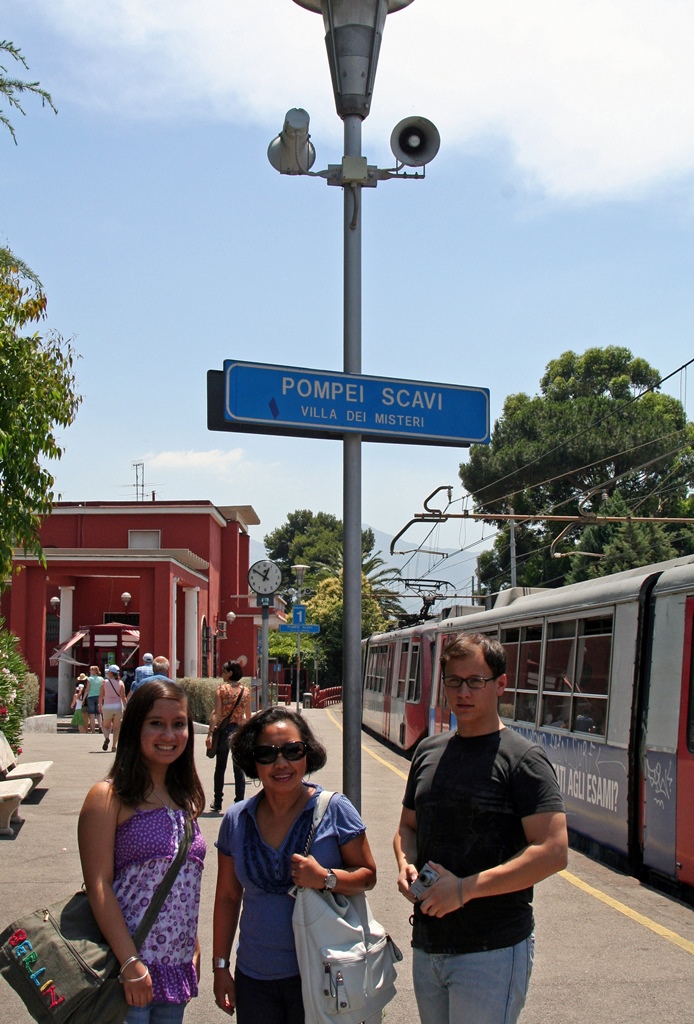
Pompei Scavi Station
Pompeii is more than 20 miles from Naples, and a traveler must pay attention to the stops
so as not to miss the one for Pompeii. This stop is called "Pompei Scavi" (the Italian
spelling for Pompeii only uses one "i"; scavi is Italian for "diggings" or
"excavation", and can also be found on signs at road construction sites). On exiting the
train station, one turns right to go toward the entrance to the ruins. On the way are a
number of places selling food and souvenirs, and across the street from these is the
Porta Marina entrance (and, thankfully, an ATM). Despite having ArteCards, we
still had to stand in the short line for the ticket office, where we showed the ArteCards
and were given Pompeii admission tickets. A short way downhill from the ticket office we
found turnstiles, where we used our tickets to enter the city.
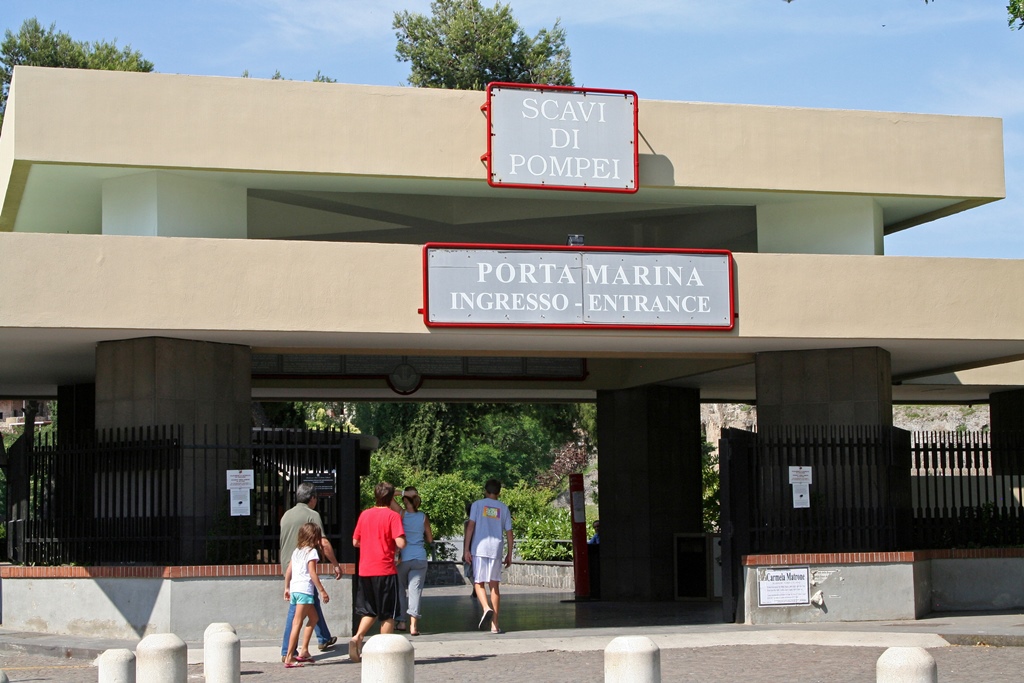
Porta Marina Entrance

Porta Marina Area
Strictly speaking, we weren't quite in the city just yet, as we were still outside the Porta
Marina (or Sea Gate) to Pompeii. 2000 years earlier we'd have been standing in the Bay of
Naples, but in 2009, a mile away from the bay, we were looking at a walkway heading uphill
toward a well-preserved tunnel through a well-preserved city wall. We took some touristy
pictures and entered the city.
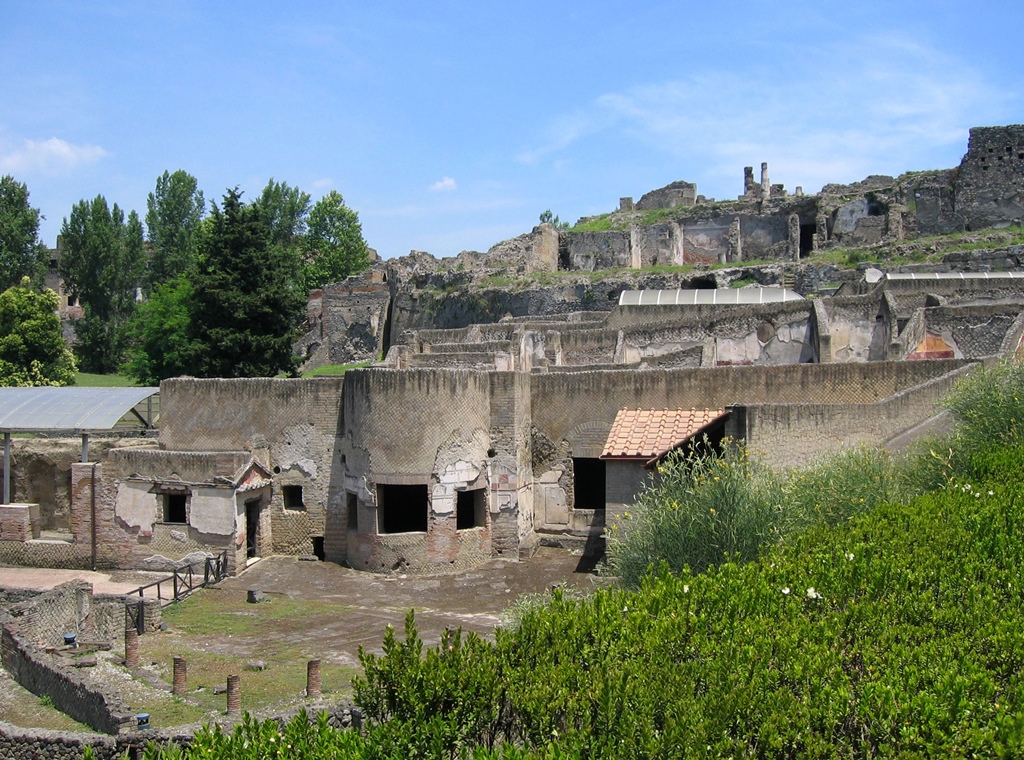
Outside the City Wall
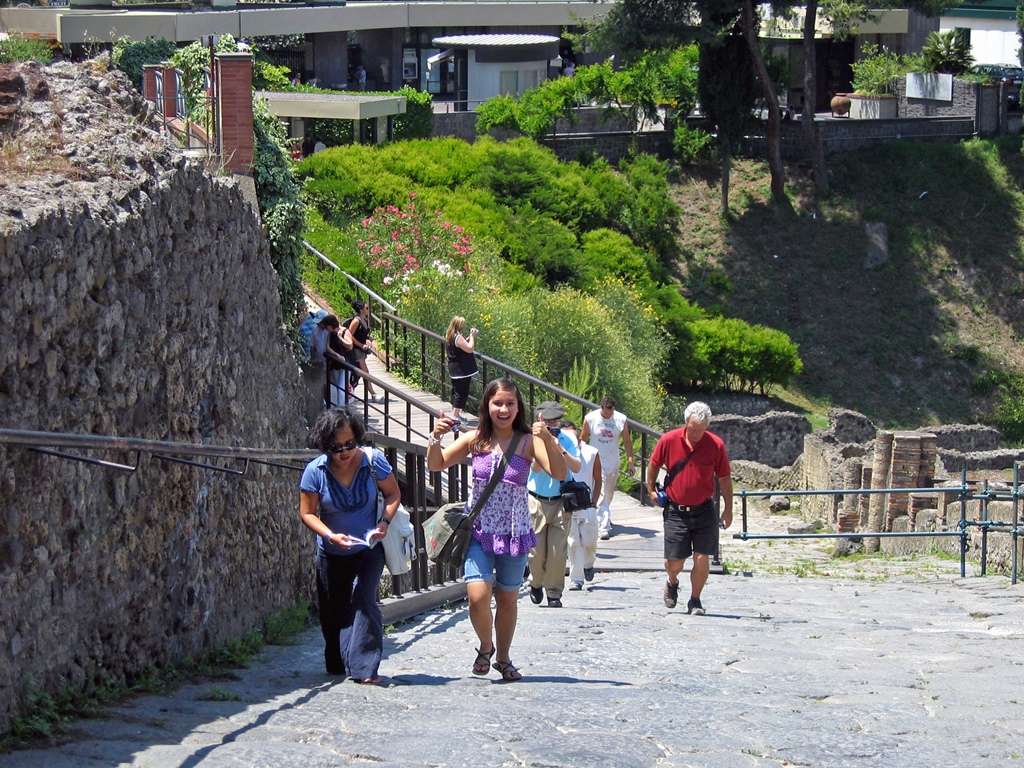
Climbing the Hill
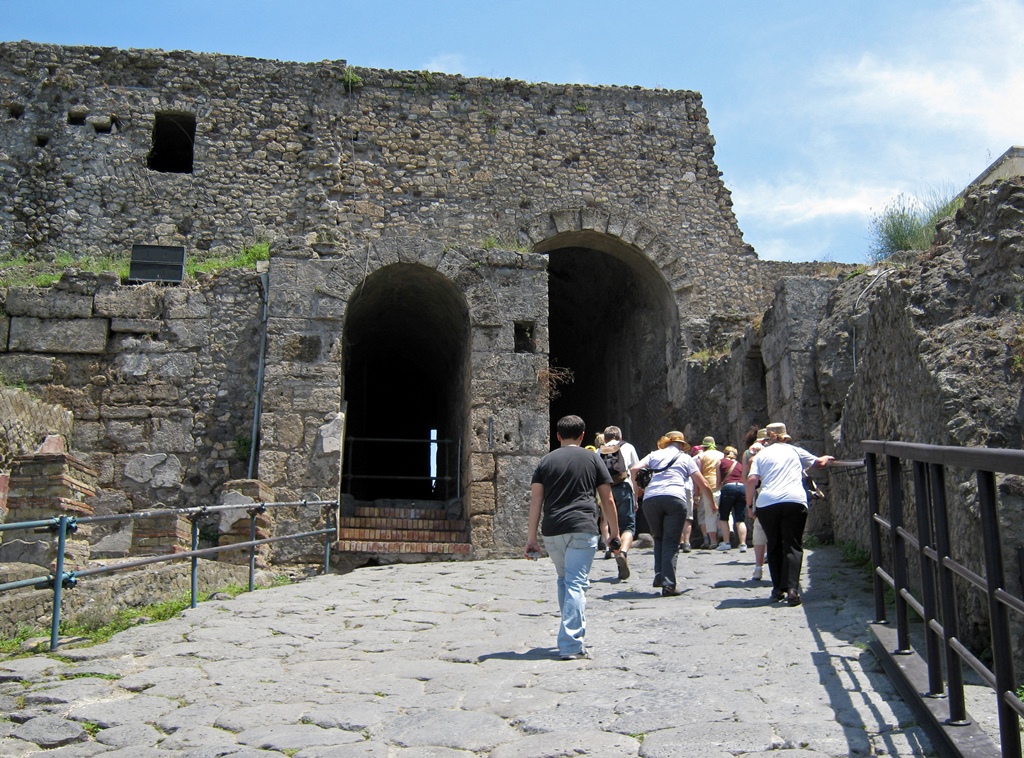
Approaching the Gate

Entering the Gate
When visiting the city of Pompeii, it is best to have a plan of what there is to see and
which of those things you're most interested in seeing. It's a very large place (once a city of
20,000, after all), and though there are a number of places that are roped off or behind
fences, for the most part you can go where you please. This being the case, it's very easy to
use up your time and energy wandering aimlessly and missing major points of interest. We
started out with the intention of following this advice – we'd downloaded a walking tour from
the Rick Steves web site, and began by following it carefully. But we lacked a couple of things
which we found to be important: one was a map, as we'd forgotten to pick one up on the way in,
and the other was the self-discipline to stick with the plan for more than ten minutes. Nella
eventually went back and found a map, but we never were able to locate the self-discipline.
Unfortunately, in Pompeii you're constantly surrounded by interesting things, and the urge to
explore them can be irresistible, especially if you're young and adventurous, like Philip and
Connie (or at least they were until the jet lag asserted itself). So we ended up missing some
of the major sights (the House of the Faun, the Amphitheater, the Gladiator School, the
brothels, etc.). But that being said, we did see a lot of cool stuff, as shown in the
following pictures. Starting with what was left of the Temple of Apollo, a short distance
past the city gate.
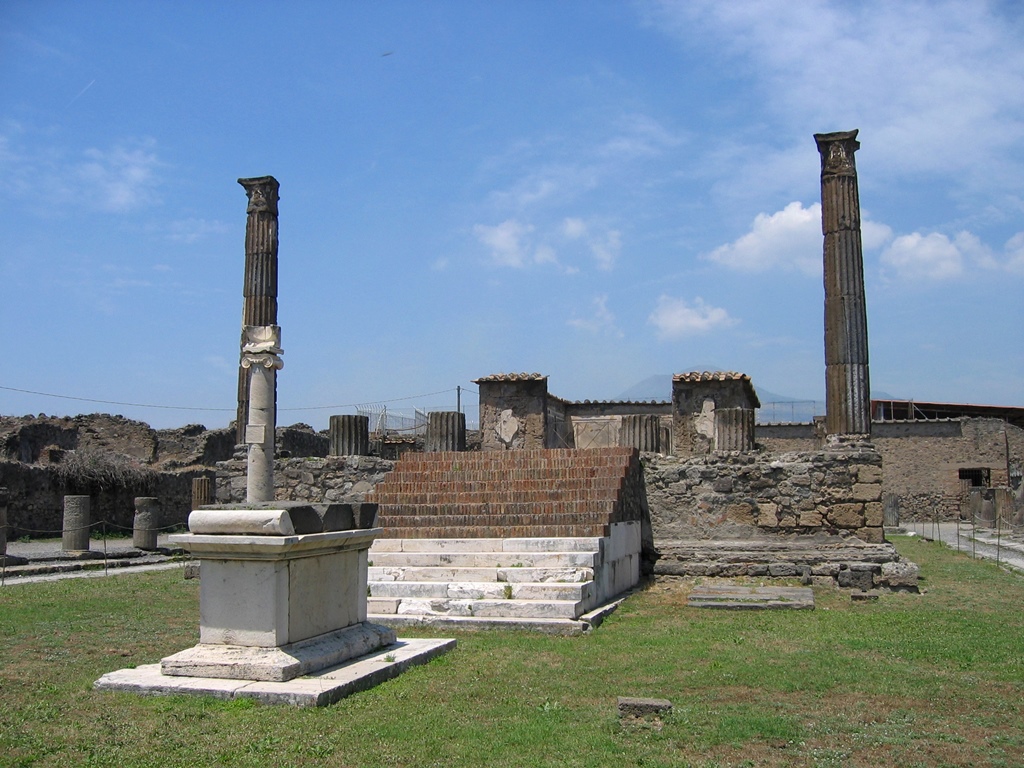
The Temple of Apollo
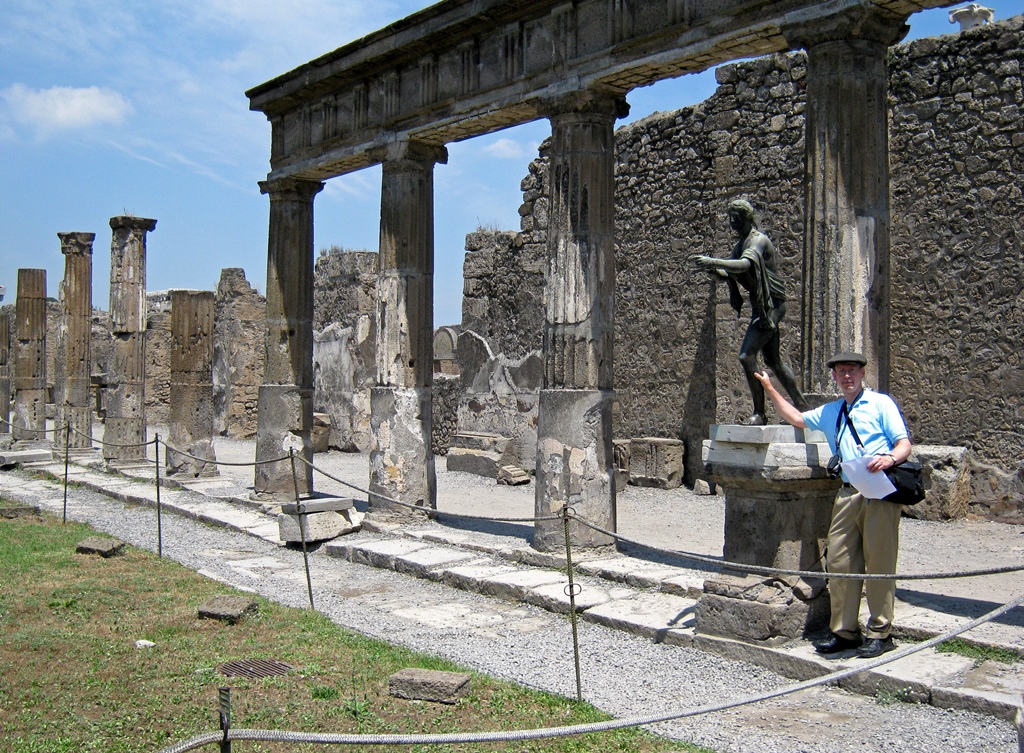
Colonnade and Statue of Apollo
Continuing down the path, we soon reached the city's Forum area, a large open area that
was once the center of the city. Adjoining the Forum there was a structure used for storage
of artifacts (mostly pottery). Also in this structure there were figures appearing to be
sculptures of eruption victims. But these weren't sculptures – they were formed by pouring
plaster into the cavities in the earth left after the bodies of eruption victims decomposed
over the centuries. They can be both fascinating and disturbing.
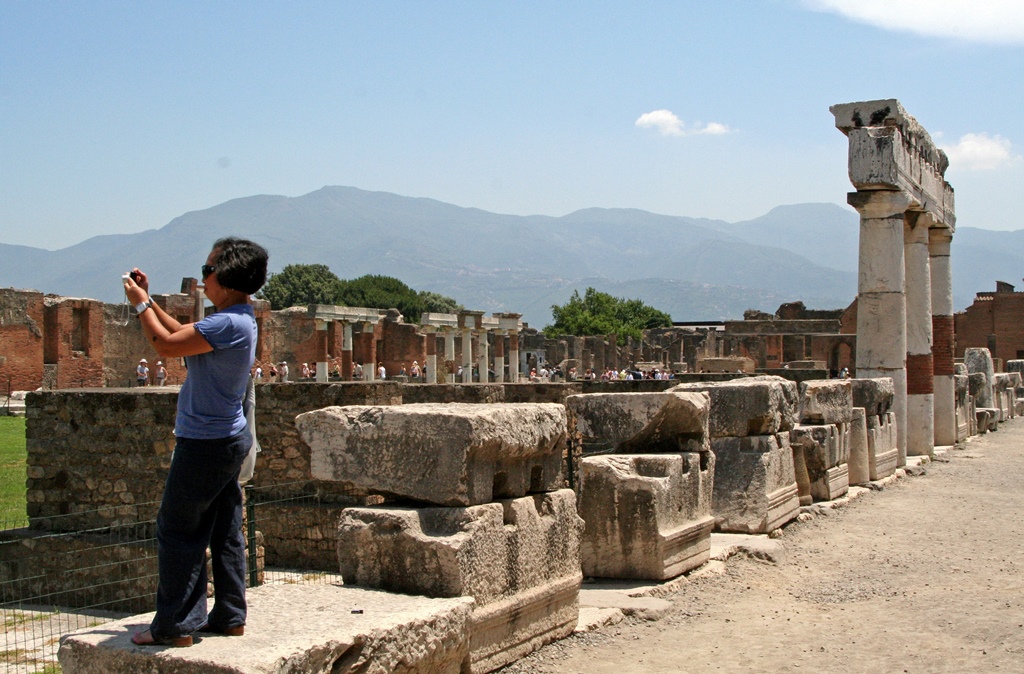
Nella and Forum Area
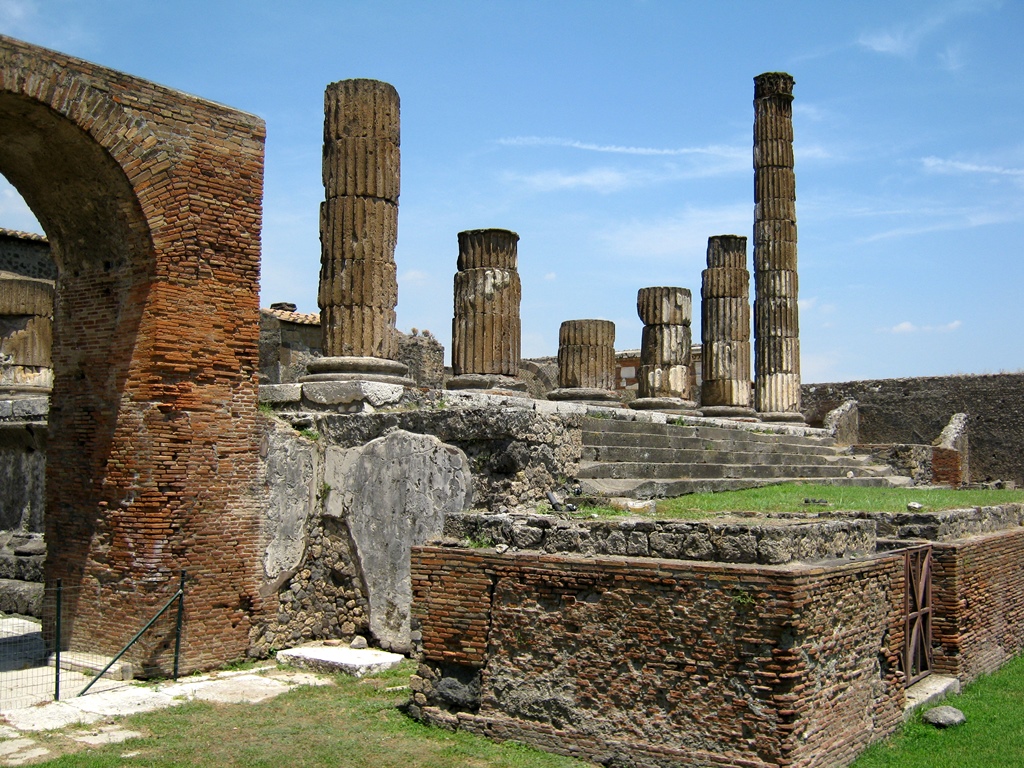
The Temple of Jupiter

Forum and Storage Area
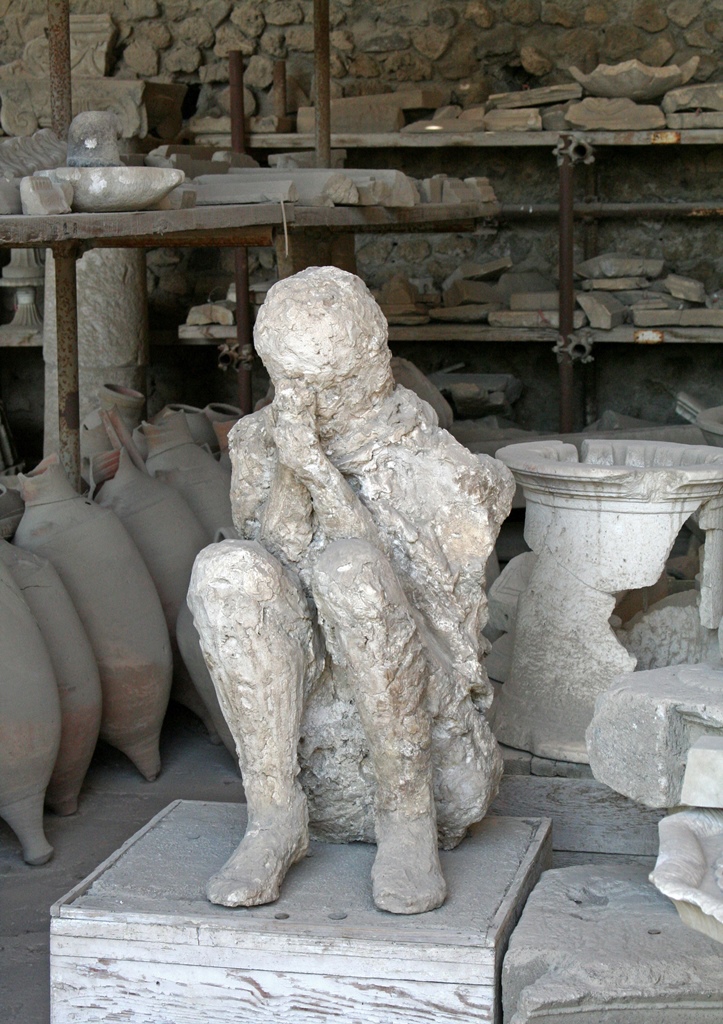
Eruption Victim
Continuing Northward from the Forum, just across from the ruins of the Temple of Fortuna
Augusta, we found a mostly-intact building that we could enter, which once held the Forum
Baths.
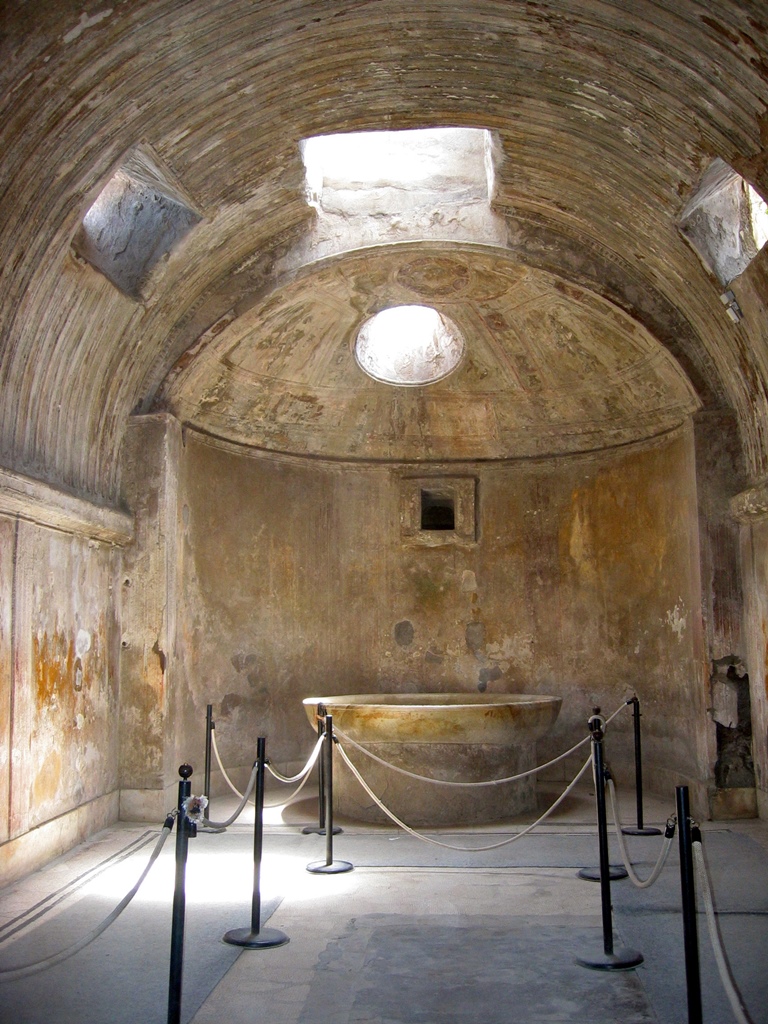
Calidarium, the Forum Baths
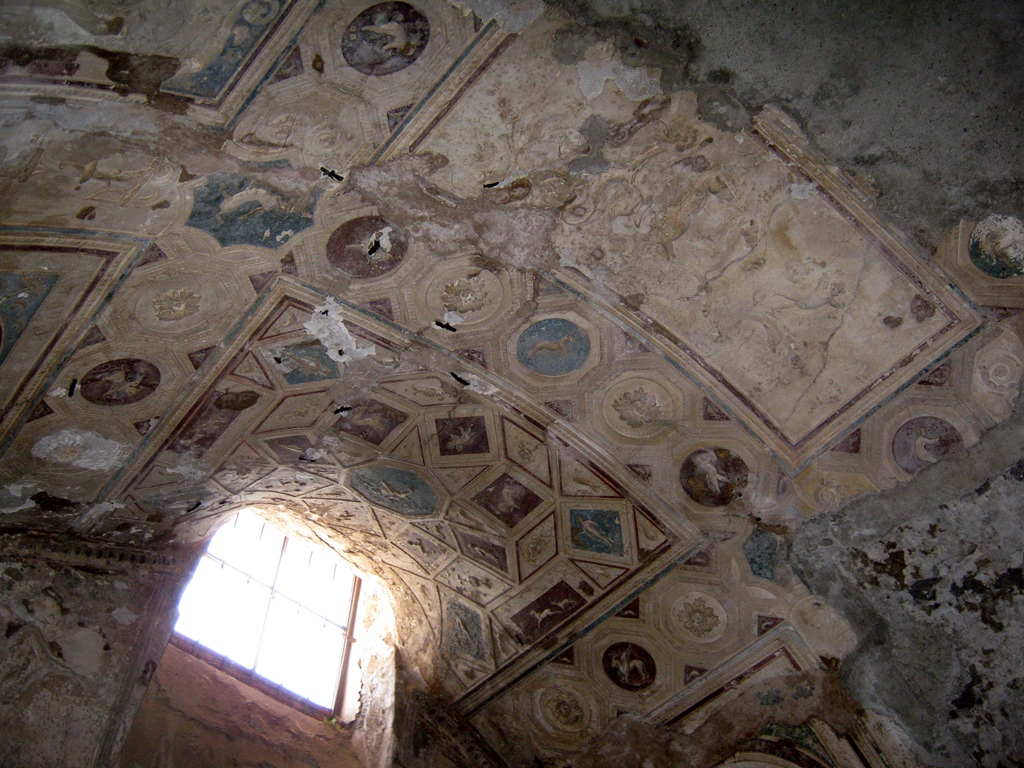
Tepidarium, the Forum Baths

The Forum Baths
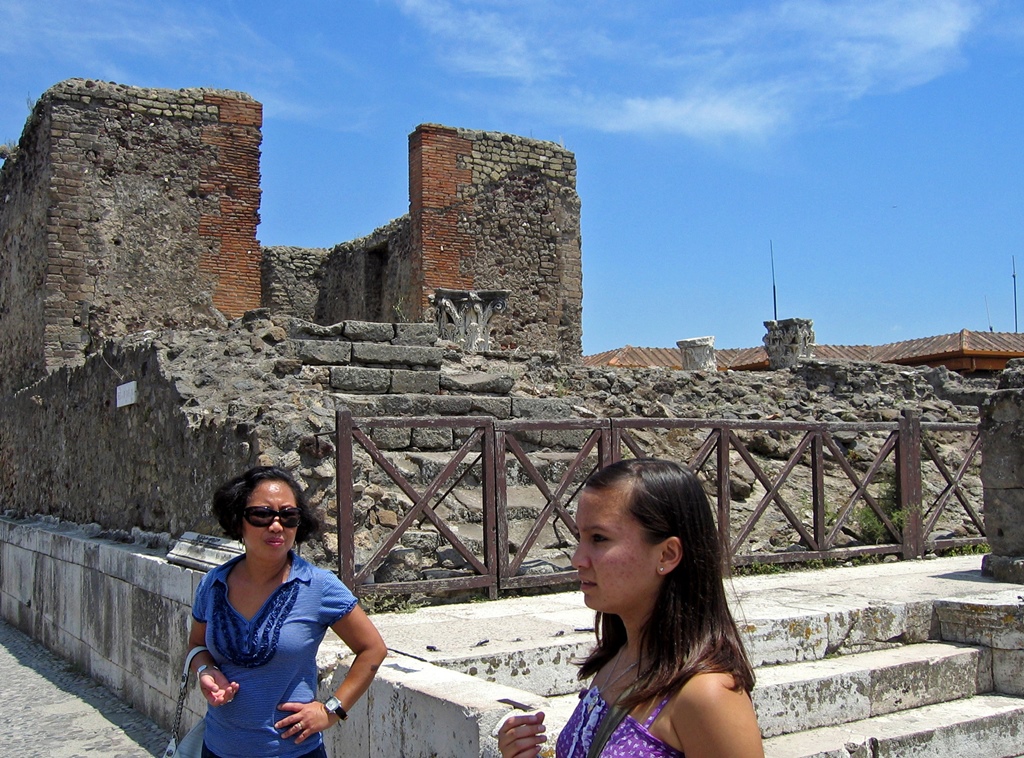
The Temple of Fortuna Augusta
Northward past the area of the Baths, we entered into residential Pompeii. Some houses
had obviously been large and luxurious, while others appeared to be working-class row
houses.
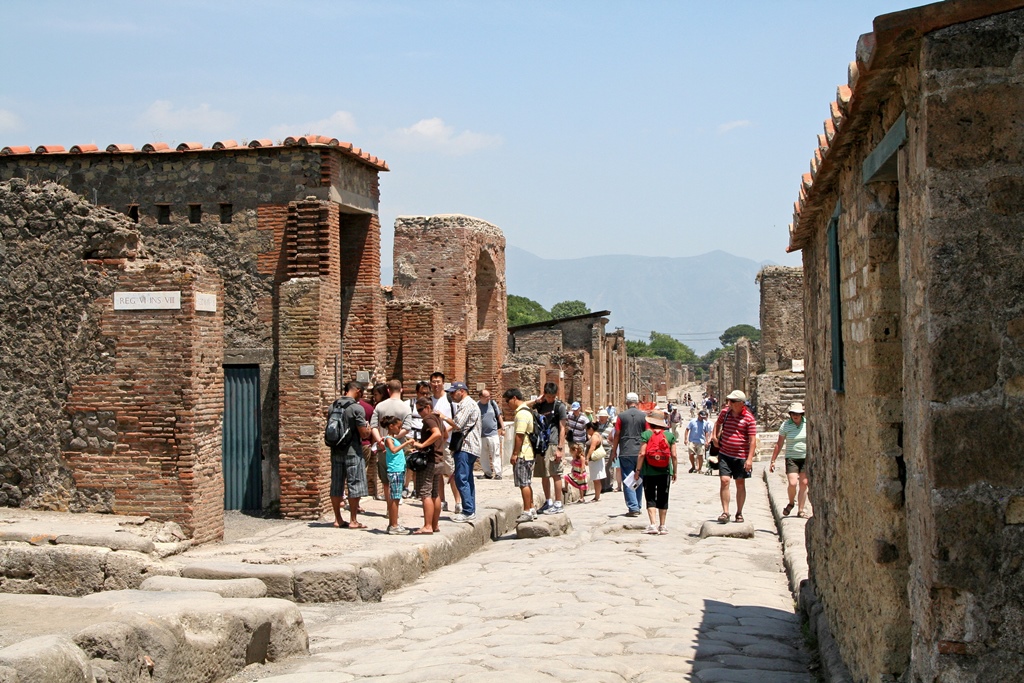
Via delle Terme
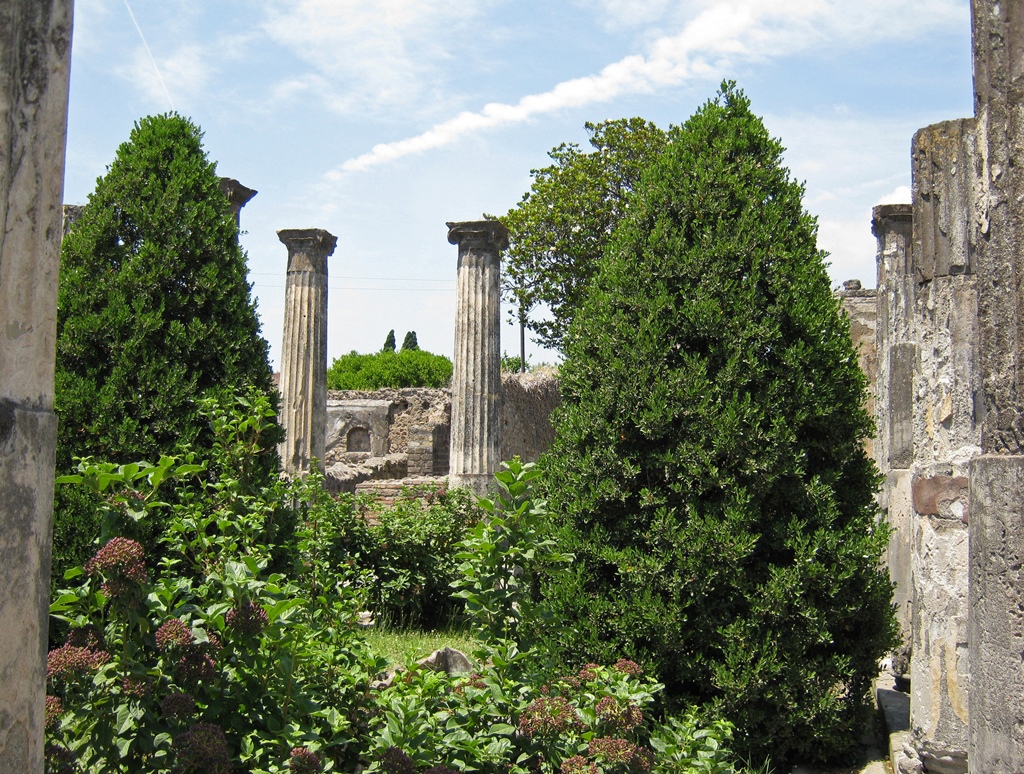
Columns, Casa di Pansa
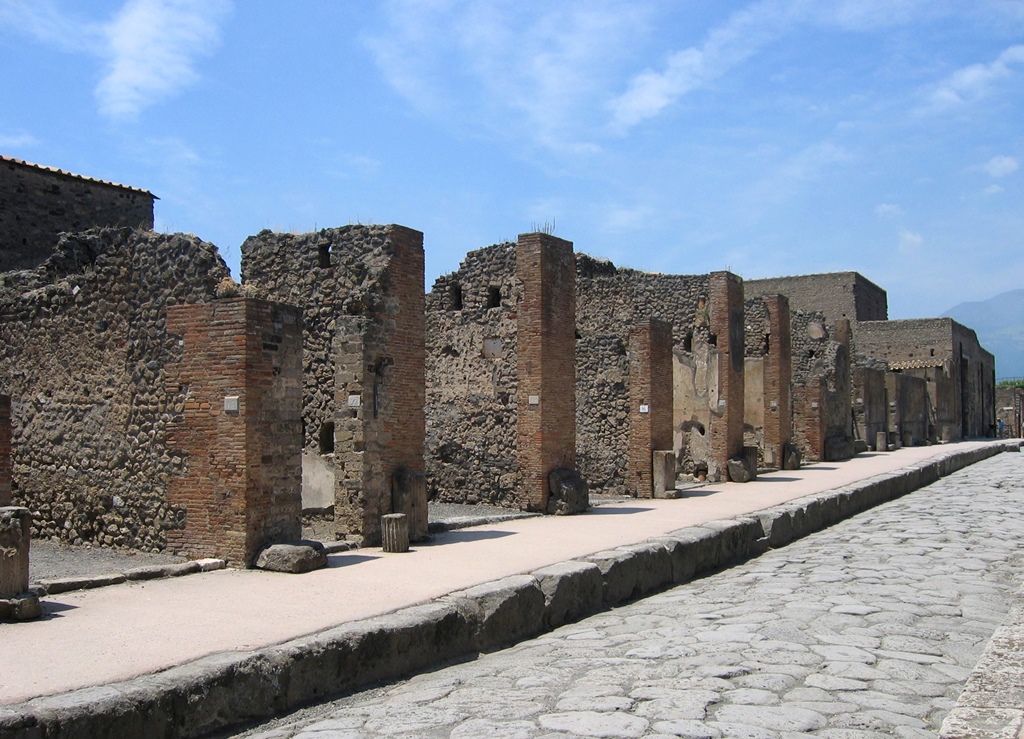
Residential Area

Connie Crossing the Street

House of the Small Fountain
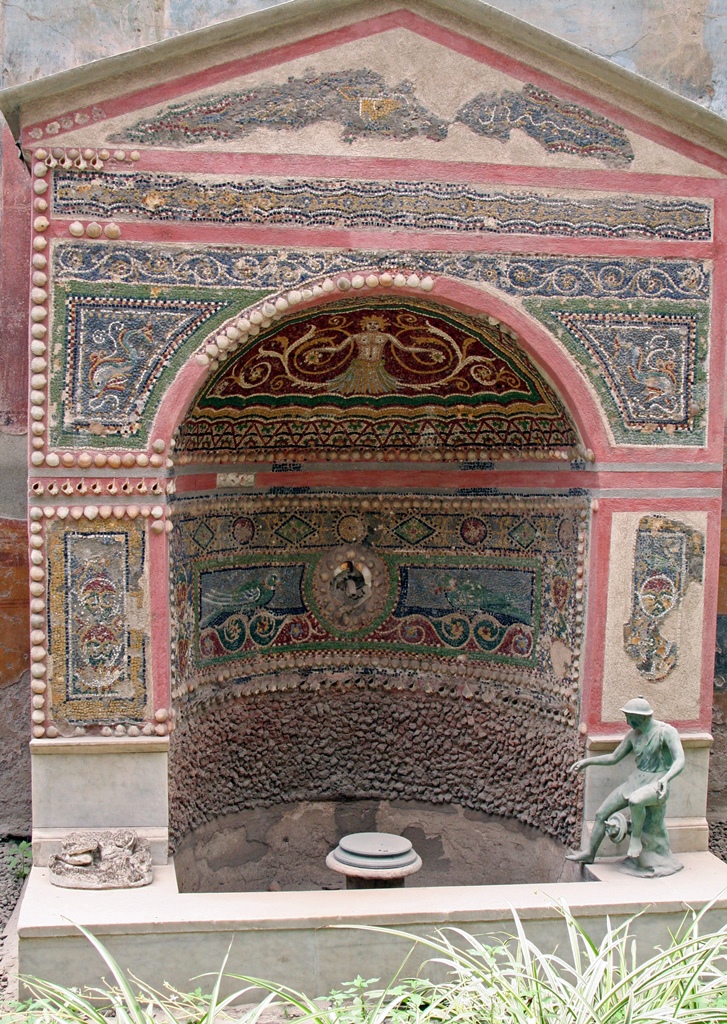
The Small Fountain
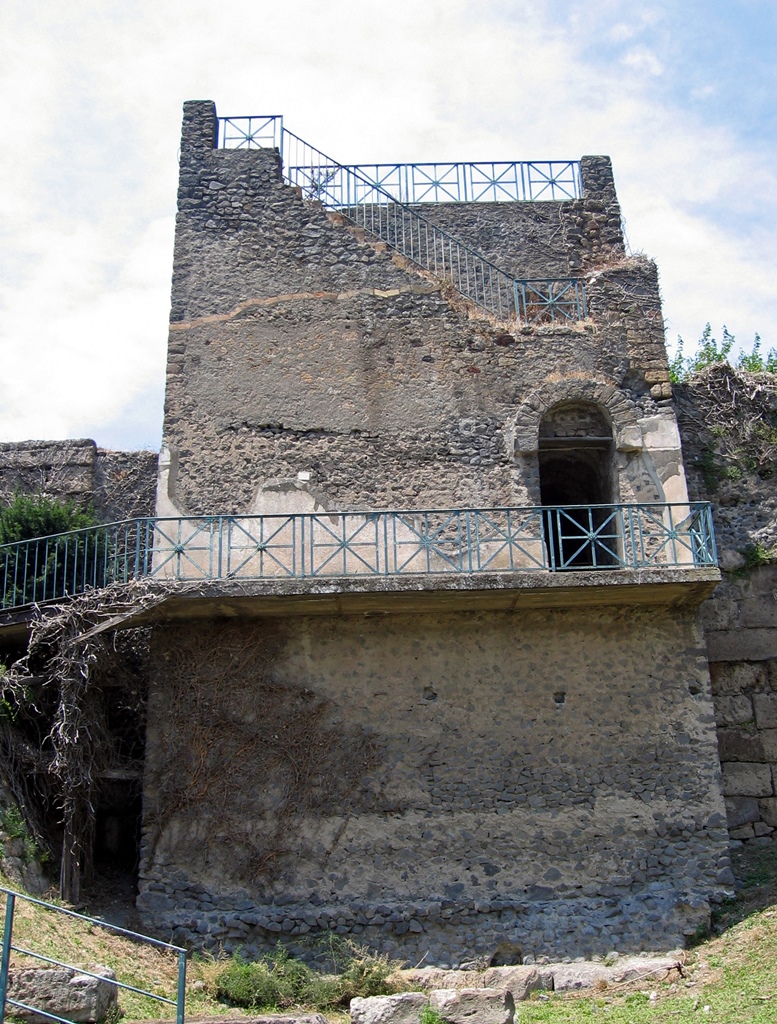
Torre di Mercurio, North Wall
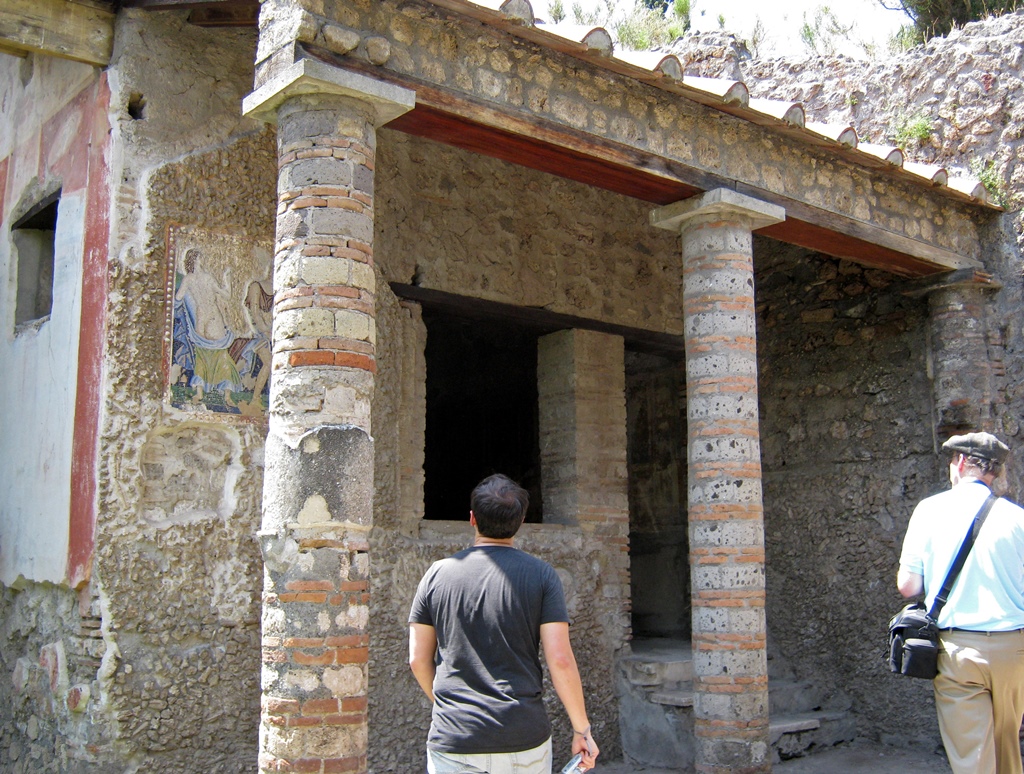
The House of Apollo
Large Pool
After a while, the ruins started looking the same to us, so we retreated to the Forum
to plan out what to do next.
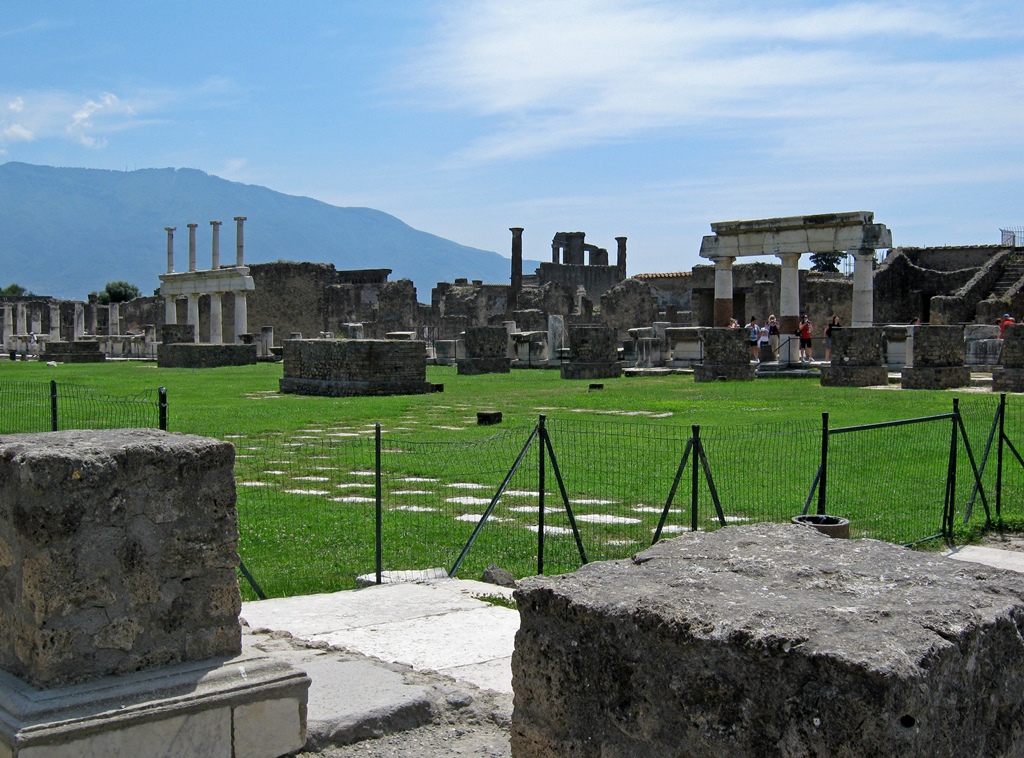
The Forum Area

The Forum Area
After looking at our map, we decided we'd visit the Villa of the Mysteries, on the
outskirts of town to the northwest. This involved a walk down a street with many funerary
monuments, called the Via dei Sepolcri. We found the Villa to be a large house in
pretty good condition, but we were never very clear on exactly what the mysteries were.
It seemed to have something to do with some well-preserved frescoes which appeared to
depict religious or cultish rites. Anyway, the whole thing was pretty mysterious to us.
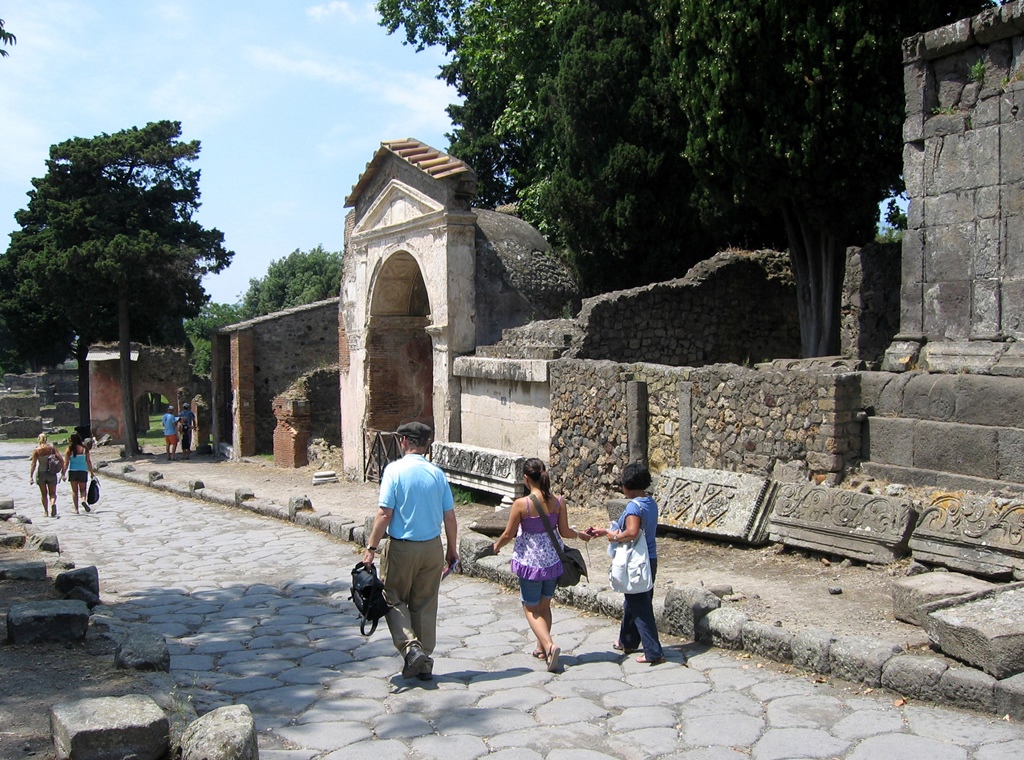
Via dei Sepolcri
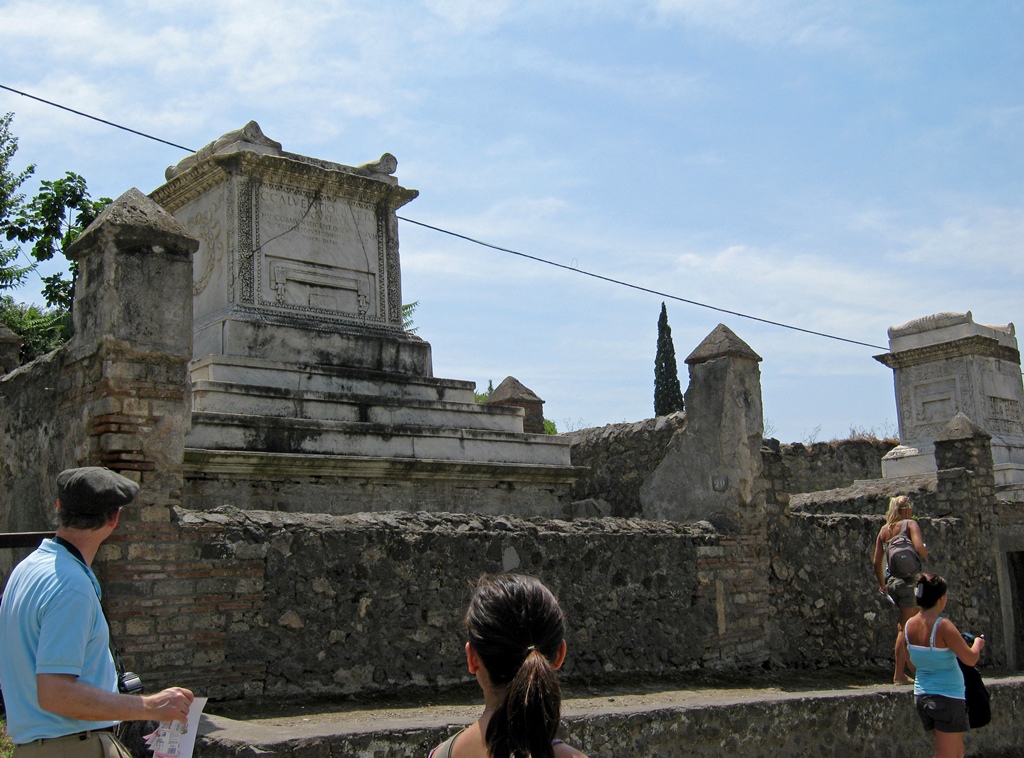
Massive Tomb
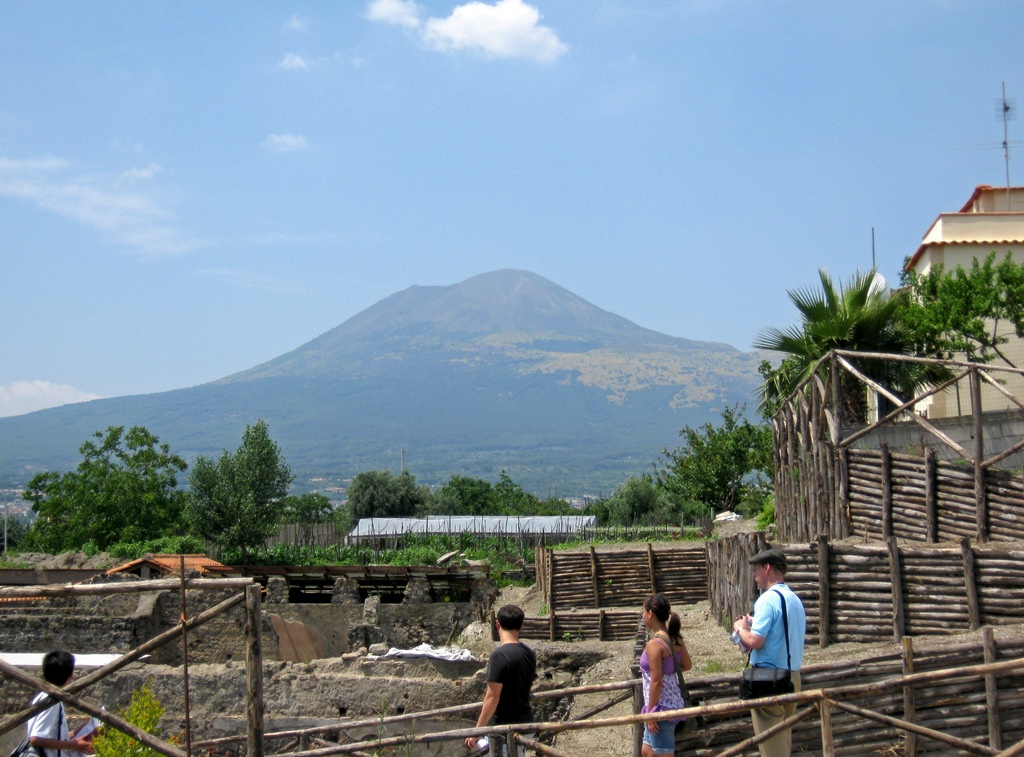
Mt. Vesuvius

In the Villa of the Mysteries
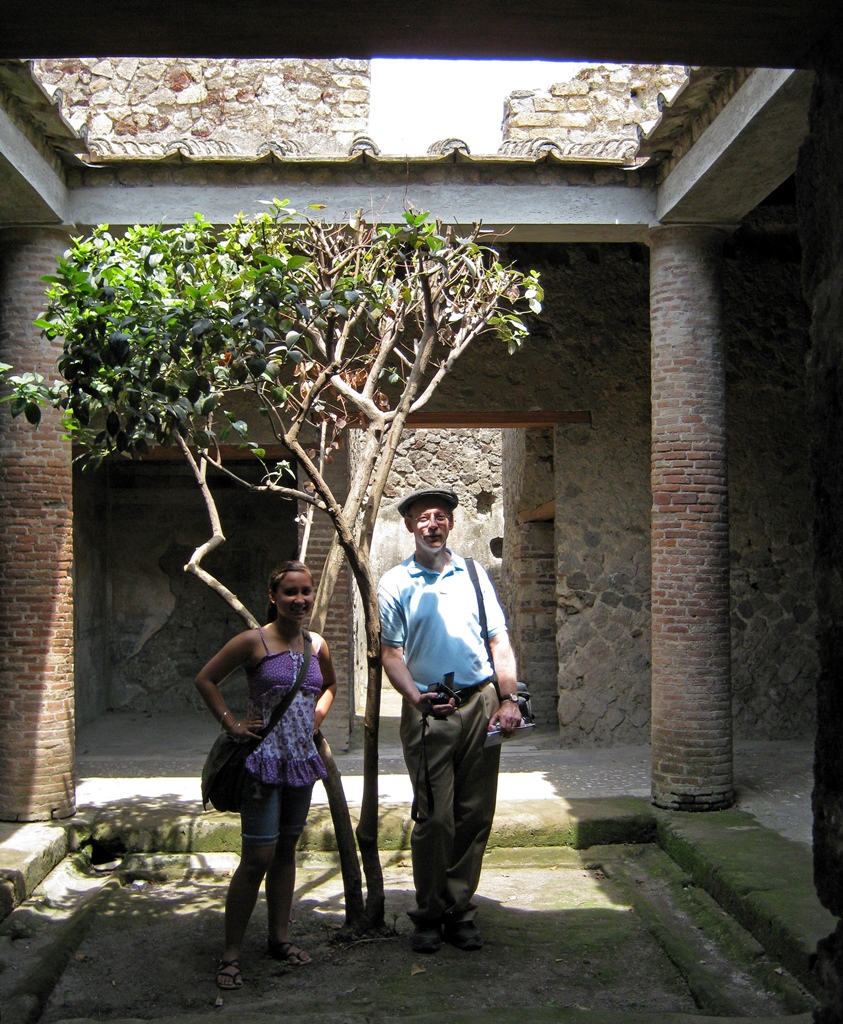
Connie and Bob with Tree, Villa of the Mysteries
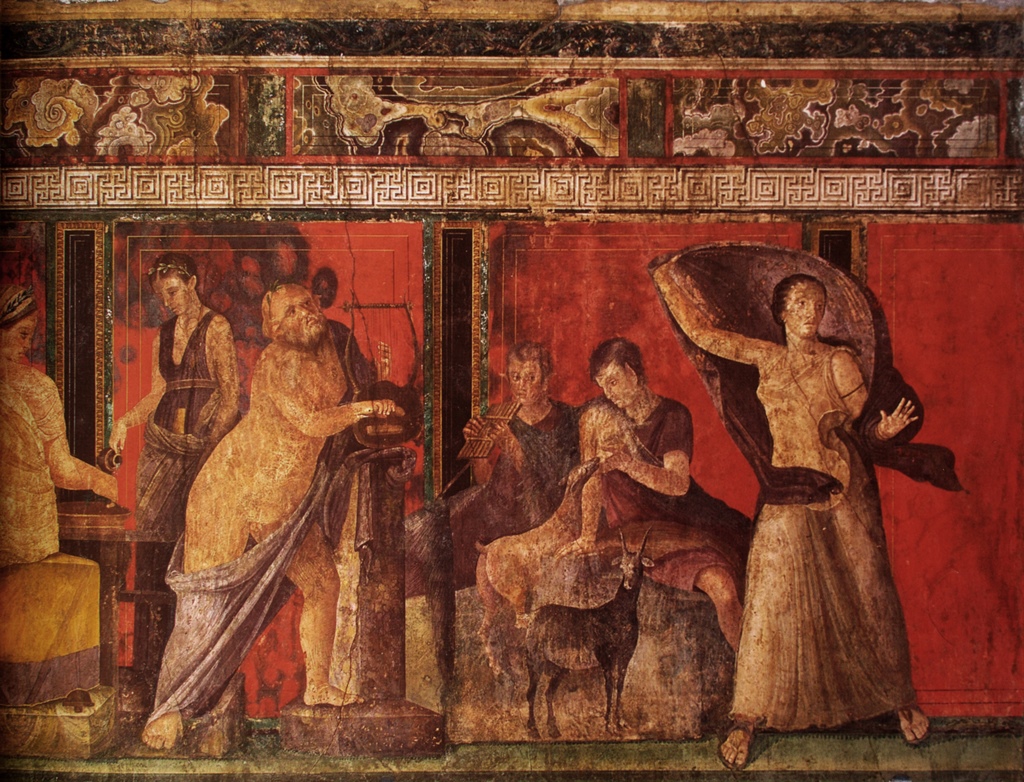
Fresco, Villa of the Mysteries
Tourist Tableau - Philip, Bob and Connie
By this time, we'd been walking around a lot and we were jetlagged and hungry and we were
about ready to leave. We made our way back up the Via dei Sepolcri to the Forum and through
a ruin called the Basilica to the exit, from which point we had a nice view of modern-day
Pompeii.
Approaching Herculaneum Gate
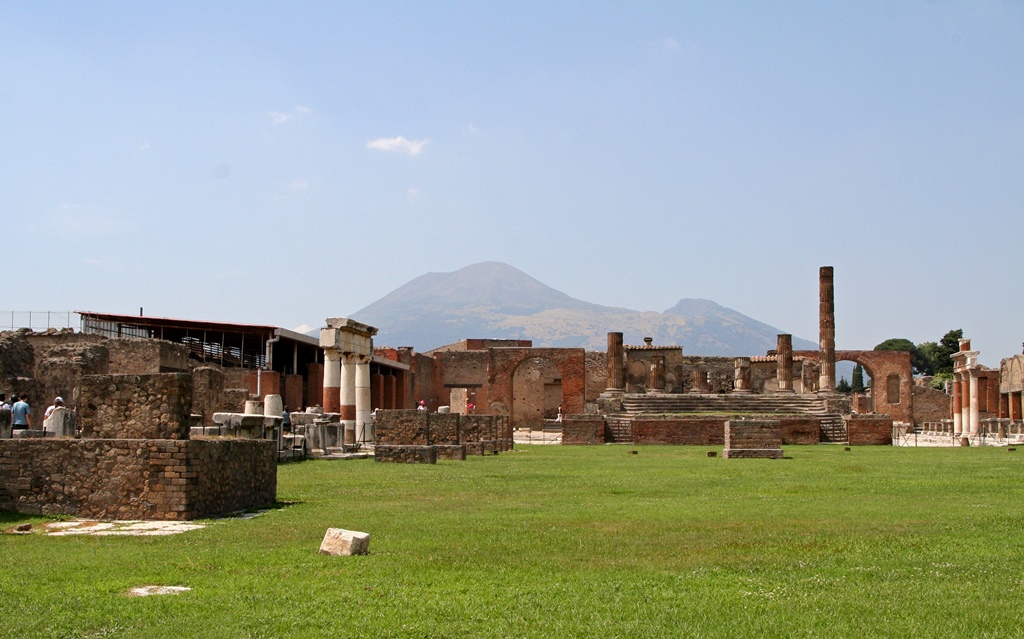
Forum Area and Mt. Vesuvius
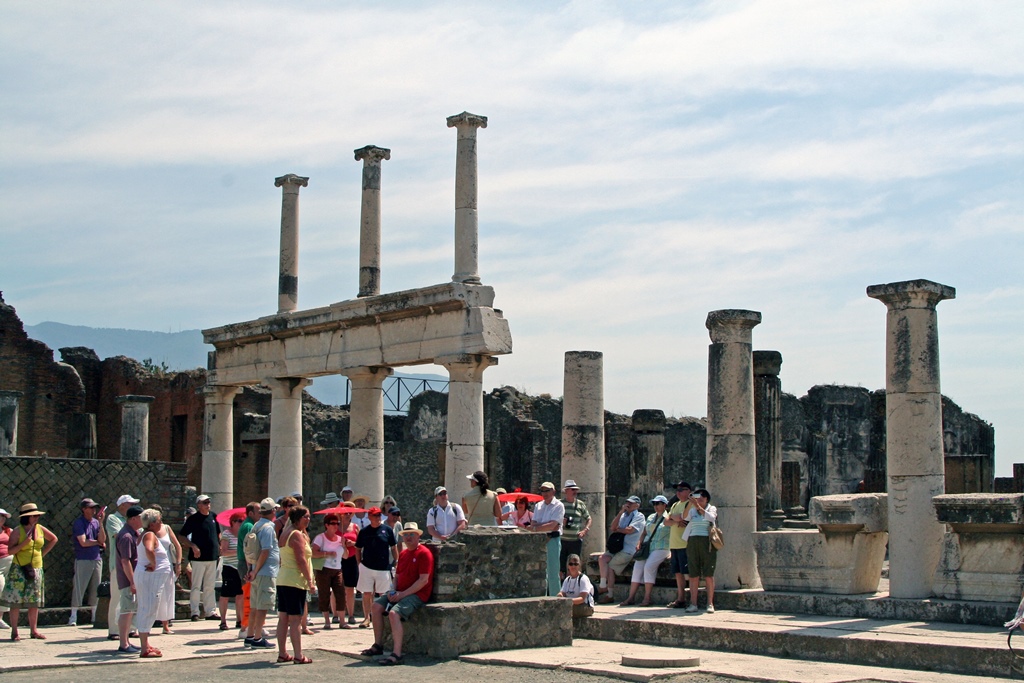
Colonnade and Tour Group
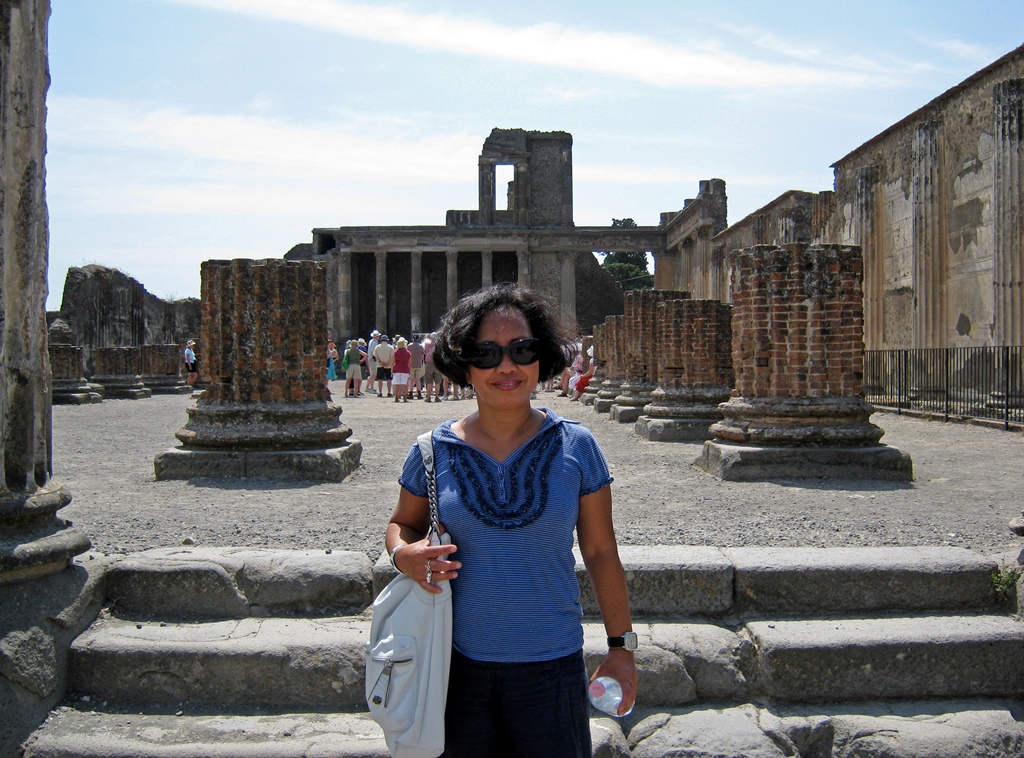
Nella and Basilica
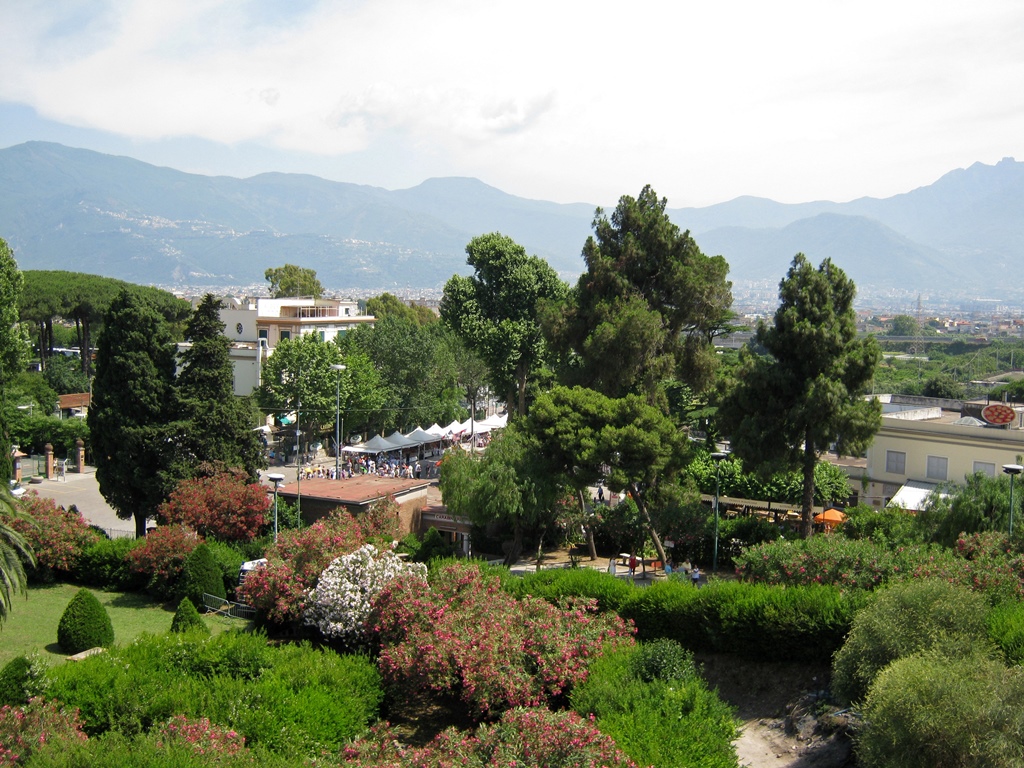
Modern Pompeii
After exiting the grounds, we crossed the street to get lunch at one of the arrayed eating
establishments. Most of us had pasta, but Philip introduced himself to a proper pizza
margherita, consisting of a thin crust, tomato sauce, mozzarella and basil, and nothing else.
Pizza margherita is one of the specialties of the Naples area and is considered patriotic,
as it features all three colors of the Italian flag. The Campania region produces the best
mozzarella in the world, and Philip was well pleased. Then we walked back to the train
station and caught the next train back to Naples.
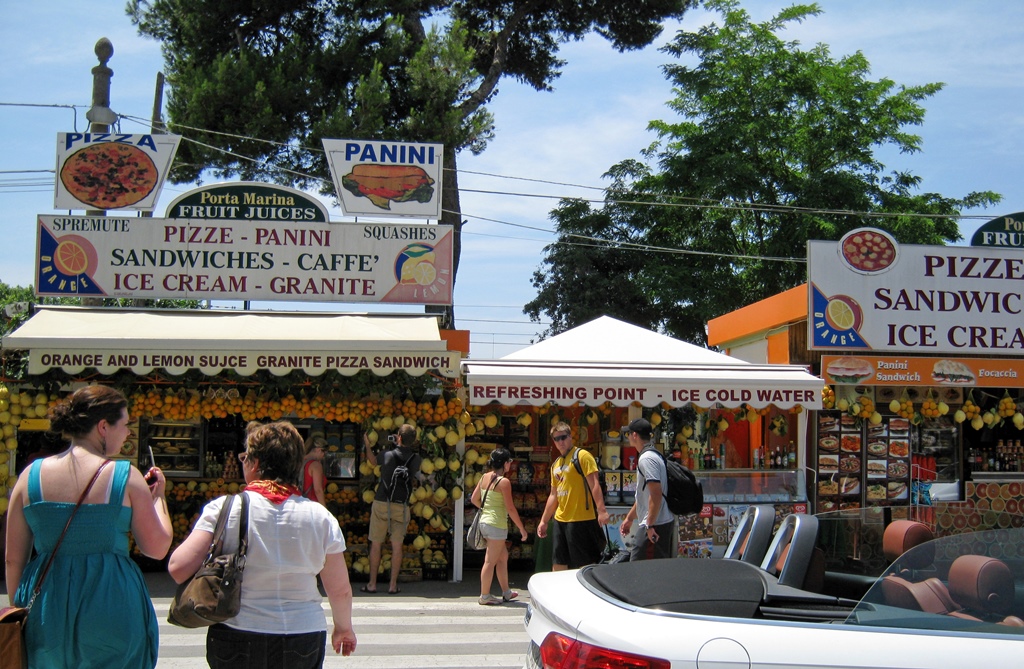
Concessions Near Entrance

Nella and Giant Lemons
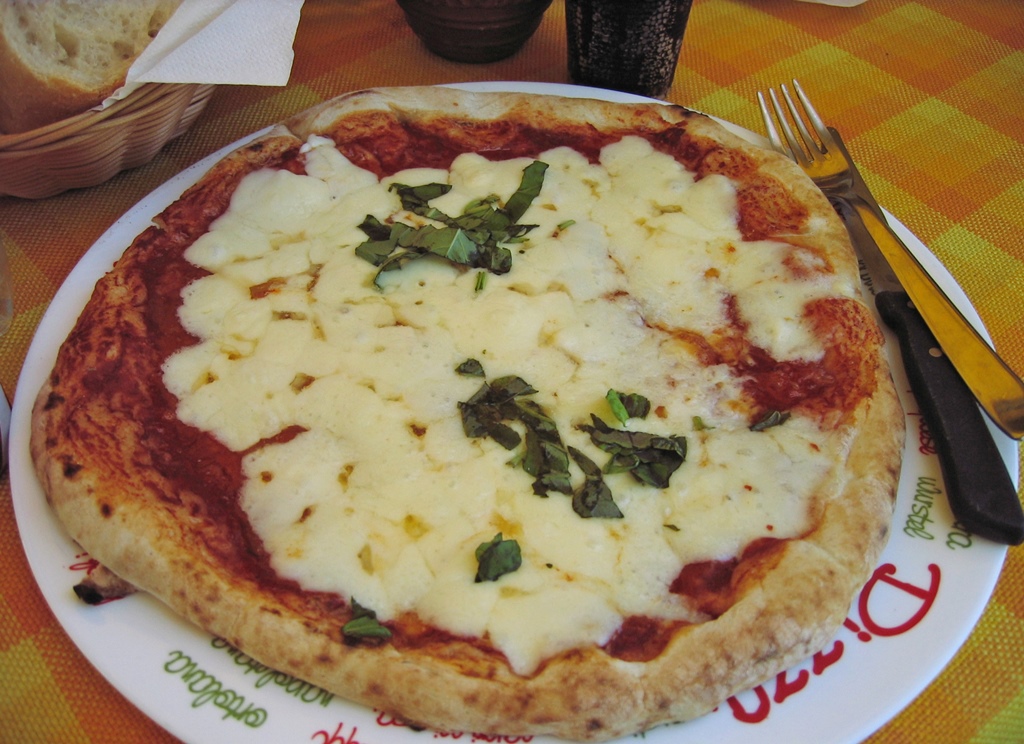
Philip's Pizza Margherita

The Sorrento Train
You might be thinking this was enough activity for one day, less than 24 hours after
crossing a continent and an ocean, and this thought had crossed our minds as well. But
we were determined to become acclimated, and were willing to kill ourselves in the
process, if necessary. So we decided to visit one more destination for the day, and
we were going to go large. We would next visit the National Archaeological Museum.

